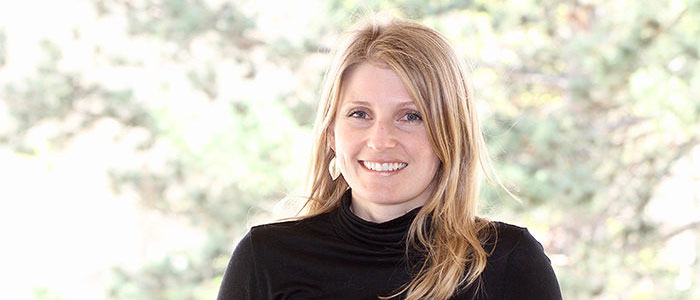News and Updates
Contact
Faculty of Social Science
Social Science Centre
Room 9438
Western University
T. 519-661-2053
F. 519-661-3868
E. social-science@uwo.ca
Data can aid ‘broken’ child-protection system
May 15, 2017
Photo and story by Paul Mayne, Western News
Jane Kovarikova doesn’t mince words when it comes to how she feels about the child-protection system in Ontario and the fate of youth who have transitioned from or simply ‘aged-out’ of it.
“It’s broken,” said the Political Science PhD student.
Kovarikova authored a recent report that showed compromised life outcomes for youth who age-out of care when compared to peers not involved in care. Kids coming from the system fall short in everything from academic achievement and unemployment/underemployment, to homelessness/housing insecurity and criminal justice system involvement, to early parenthood and poor physical/mental health.
The report was released last month by the Office of the Provincial Advocate for Children and Youth.
“Ontario has never done a systematic study – at all. They don’t track outcomes after care,” she continued.
Child welfare legislation in Ontario is finally being reviewed for the first time in close to 30 years. In March, Kovarikova testified before the Standing Committee on Justice Policy and recommended they adopt an outcome-driven, or evidence-based, child-welfare system.
“If you don’t measure what happens to youth after they leave,” she argued, “how do you know what you’re doing is working?”
Kovarikova is intimately familiar with the child-protection system; she was a youth in its care until age 16, when she began living on her own. Having supportive foster parents and other mentors to offer encouragement along the way, she assumed her experience was not unusual. But while she will shortly earn her doctoral degree from Western, she found the majority of youth in her previous circumstances face negative outcomes once leaving the system, including:
- Youth in care struggle to complete high school, with only 44 per cent of Ontario Crown Wards graduating, compared to 81 per cent of their peers. For those who enrol in postsecondary education, significantly fewer former foster youth finish their studies compared to same age peers;
- Unemployment and underemployment are higher among youth who age-out of care compared to their same age peers, as well as peers from other disadvantaged backgrounds. With the majority living in poverty, as many as 90 per cent of youth in care may be on welfare within six months of aging-out;
- The birth rate for teenage pregnancy is triple, or quadruple, among women aging-out of care by ages 17-19 compared to same age peers. By age 19, half of women who aged-out of care have been pregnant; and
- One third of Ontario permanent wards have a mental-health disorder and have no, or little, access to health care.
Kovarikova said approximately 17,000 of Ontario’s 3.1 million children are in care of Children’s Aid Societies or approximately 1 out of 182 children. Almost half of these young people are Crown Wards who have been permanently removed from their homes and families. For these youth, the province has assumed formal responsibility as a ‘parent,’ with 800-1,000 youth aging-out of care each year.
Not surprisingly, some Ontario youth in care report feeling a deep sense of abandonment when they formally age-out of the system and anxiety about the impending lack of support after leaving care, she added.
“Many of the resources presented were based on survival,” Kovarikova said. “They talk about renting rights when evicted, rights when arrested, a budget section talked about pregnancy and diapers. It’s not malice on the government’s part; it’s probably because someone did the research and found outcomes are pretty hard for youth after they age out. They were trying to create solutions to what they might encounter.”
But if the process was revamped from the start – the idea being there would hopefully be fewer problems needing to be solved – outcomes would be much more positive, she added.
The problem is legislative, Kovarikova said, where there is no justification to track youth once they’re adults and have left the system.
“If you’re not measuring outcomes, then how do you know you effectively parented those children?” she said. “You may have done your job, but you don’t know if you have done it well or not, and that’s what I’m suggesting. We really have to look at that.
“There is more than a billion dollars in the child-welfare file. That’s a lot of money to not know if it’s being invested wisely. If you took an evidence-based approach, you could look at that data and you’d compel innovation in that sector.”
It is tempting to suggest traumatic backgrounds and personal characteristics of youth ‘cause’ these poor outcomes. However, Kovarikova said the findings from her study suggest structural factors and professional practices, inherent in the child protection system, may contribute to poor outcomes for youth aging-out of care.
“My answer is the data,” Kovarikova said. “Just have an evidence-based system. With that act alone, there will be mass information. You don’t need more advisory panels, you need a research team that is tapped to look at the different avenues to improve the system. That would be an amazing first step.”

